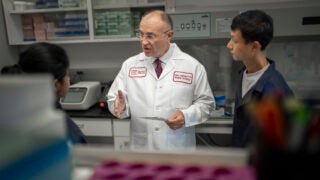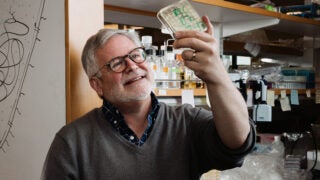
USC researchers are testing an algorithm to form peer support groups. (Photo/Pixabay)
How artificial intelligence can help us eat better
You are what your friends eat, according to USC researchers whose study aims to prevent obesity and diabetes in kids; AI may be able to find friends who are good influences
Do you have that friend you go out with to indulge on all the scrumptious (and unhealthy) delicacies L.A. has to offer? Or how about that other friend who eats organic and always makes you feel like an unhealthy chicken nugget? Chances are you have both — and you’re also probably one of them.
Peers can wield a lot of influence when it comes to our lifestyle choices: According to the American Psychological Association, people who enrolled in weight loss programs with friends did a better job at keeping their weight off than those who did it alone. Bryan Wilder, a PhD candidate in computer science at the USC Viterbi School of Engineering, and Kayla de la Haye, assistant professor of preventive medicine at the Keck School of Medicine of USC, believe there’s an opportunity to optimize our peer influences to live a healthier life using artificial intelligence.
Bridging de la Haye’s knowledge of public health with Wilder’s skills in computer science gave life to USC’s Center for Artificial Intelligence in Society’s RECONNECT model, a comprehensive algorithm that provides health practitioners the tool to form real-life peer support groups based on demographic, social and health-related data volunteered by patients.
Wilder and de la Haye will test their algorithm in California’s Antelope Valley where 15 percent of its 400,000 residents live below the poverty line. According to the L.A. County Department of Public Health, only 10 percent of children living in this region are considered by their parents to be healthy, and obesity rates are among the county’s highest.
The study’s goal is to work with low-income moms and their infants to promote healthy eating and activity to prevent diseases like obesity and diabetes in children.
A pilot research conducted by de la Haye found surprising data to support social intervention. For instance, particularly with the at-risk community in Antelope Valley, moms with young children have very few same-age peers, and those who have no peers and limited social support exhibit poor health-related behavior such as unhealthy diet and lack of exercise.
Healthy eating and key connections
“We know that the algorithm is thinking about the big picture of the entire social network,” said Wilder, who is advised by Milind Tambe, holder of the Helen N. and Emmett H. Jones Professorship in Engineering. “Not just an individual person. It’s considering these chains of influences when it takes someone who needs a healthy buddy and matches him or her up. The algorithm is a lot more effective because it manages the global picture.”
RECONNECT creates networks on a big-picture scale. Rather than recommend the right weight loss program like traditional methods, RECONNECT recommends the right people to surround yourself with for permanent behavior change. Embedded in a social circle that promotes health and well-being, you’re better equipped to make healthier choices.
The National Institute of Health is funding the next phase of its research in Antelope Valley. The NIH funding was granted to de la Haye and her co-principal investigator, Sarah-Jeanne Salvy of the University of Alabama, Birmingham. This phase will involve a group of 300 families that will be enrolled in an 18-month home-visiting program monitored by a certified health professional.
Half of the families will receive the standard home-visiting services, while the other half will get an enhanced home-visiting service with a new healthy lifestyle intervention and a family and peer support component facilitated by the RECONNECT model.
The researchers hope to see if families engaging in healthy lifestyles and RECONNECT are overall better off and have less risk for diseases like obesity and diabetes compared to families who receive only the standard in-home services.



